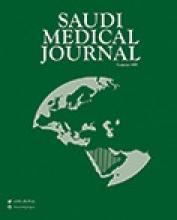Abstract
OBJECTIVE: To examine the co-expression of CD19, CD45, CD38, CD56, and CD138 molecules in plasma cells of bone marrow (BM) aspirates and their relation with BM infiltration, and treatment in patients with multiple myeloma by flow cytometry.
METHODS: Forty BM aspirate samples were assessed from 40 patients at diagnosis and on follow-up at the Medical Oncology Department, Cukurova University, Balcali Hospital, Turkey, between 2002 and 2004. The mean age was 56.83 +/- 9.1 and male:female ratio was 2.6. All patients received at least 4 courses of VAD(vincristine, adriamycin, dexamethasone) regimens and 20 of them were also treated with high dose melphalan and peripheral autologous stem cell transplantation. The median follow-up period was 19.1 +/- 22.7 months.
RESULTS: Using light microscopy the BM smears stained with hematoxylin and eosin from patients on follow up were classified into one of 3 categories, complete remission (CR) (<5%), partial remission (PR) (>5% and <30%), and extensive infiltration (EI) (>30%). According to infiltration ratio 23 were evaluated CR, 2 were PR and 15 were EI. The mean value of CD19 was 6.01 +/- 9.5%, CD56 = 9.9 +/- 6.8%, CD138 = 8.6 +/- 5.6%, CD45 = 84.2 +/- 22.3% and CD38 = 59.5 +/- 25.4%. The flow cytometric analyses revealed that only the mean value of CD38 and CD45 expression were significantly high. We correlated infiltration ratio with each parametric and found statistically significant relations. We also correlated independent variables with each other and found a relation between CD38 and CD19 (p=0.005). We also defined the groups whether treated with peripheral autologous transplantation or not and compared the independent variables between them, in which CD138 was statistically significant (p=0.02).
CONCLUSION: We suggest BM plasma cells expressed mainly by CD38 and CD45 may have a role in generation of BM plasma cells and that CD138 expression may be considered in follow-up for minimal residual disease after autologous transplantation in myeloma patients.
- Copyright: © Saudi Medical Journal
This is an open-access article distributed under the terms of the Creative Commons Attribution-Noncommercial-Share Alike 3.0 Unported, which permits unrestricted use, distribution, and reproduction in any medium, provided the original work is properly cited.






